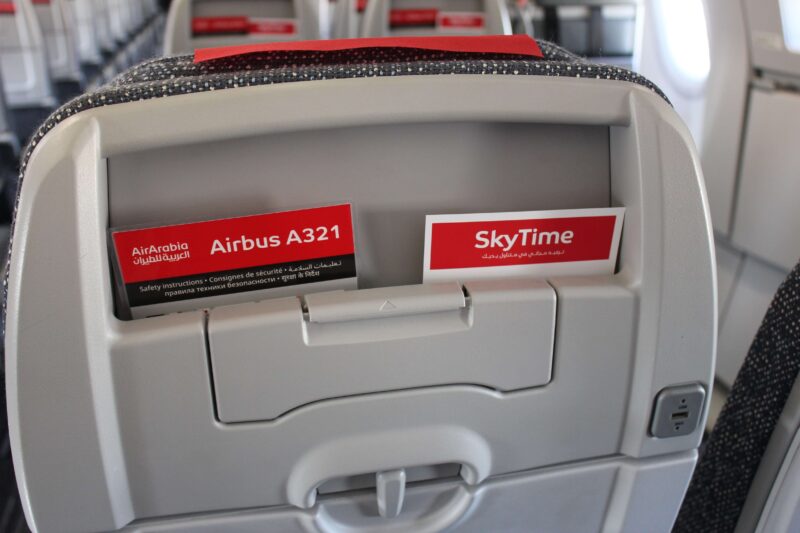
The Middle East is one of the main players in global commercial aviation, with the region’s three major full service carriers, the so-called ‘MEB3’, Emirates, Etihad and Qatar Airways, garnering a great deal of attention.
However, right on their doorstep a different sort of airline has quietly, but steadily, been building its very own multinational empire, stretching all the way from Morocco to Pakistan and from Sudan to Armenia.
It’s barely 20 miles, as the crow flies, from Dubai’s downtown to Sharjah International Airport (SHJ), where Air Arabia has its main base.
However, Air Arabia’s strategy couldn’t be more different.
Instead of trying to connect distant continents through a single massive hub, Air Arabia has focused on point to point flights to and from multiple bases. Rather than trying to offer the most luxurious experience up in the sky, Air Arabia has opted for the tried and tested single cabin, no frills, value model.
 |
| Image by Arnold O. A. Pinto / Shutterstock.com |

The product and market overlap is limited enough that Air Arabia’s no frills business model could be considered complementary to that of other full service carriers in the region.
This is the logic that underlies Air Arabia’s recent expansion into Abu Dhabi (AUH), where its partner is none other than the local carrier, Etihad.
By inviting Air Arabia to set up shop in its home base, Etihad expects to complement its existing full service offering by reaching out to additional market segments and destinations that may be less well suited to its mainline operation. This is a symbiotic relationship similar to that enjoyed by Emirates and flyDubai at Dubai international airport (DXB).
With this arrangement, Abu Dhabi became Air Arabia’s third base in the UAE (in addition to its main Sharja base, it also runs a small operation out of the emirate of Ras-Al-Khaima) but its ambitions reach far beyond the confines of the UAE, the Gulf region or even the larger Middle East.
Celebrating 2 years from Abu Dhabi!#WhereNextFromAbuDhabi pic.twitter.com/lONbbu40CS
— Air Arabia (@airarabiagroup) July 14, 2022
Air Arabia’s decentralized growth strategy has led it to establish a number of joint ventures with local partners in several different countries, a formula that helps Air Arabia expand into new markets while navigating the intricacies of each particular market.
This is the case of two of Air Arabia’s earlier and most successful forays out of Sharjah: its Moroccan and Egyptian subsidiaries, launched in 2009 and 2010, respectively.
In both countries, Air Arabia operates under its own brand, as it also did in Jordan before closing down operations in that country in 2018.
More recently, Air Arabia has announced plans to launch a new venture in Sudan, which will also use its own brand. For this project, which was announced last September, Air Arabia has allied itself with a Sudanese firm, the DAL Group.
Air Arabia Sudan will be operating out of Khartoum International Airport (KRT) and is expected to replicate the operational model of its sister companies elsewhere.
This year has also seen the launch of Fly Arna, a joint venture with the government-owned Armenia National Interests Fund (ANIF) which aspires to become Armenia’s national carrier. While, in this case, the new airline uses a different brand, Air Arabia is in charge of its management and operations.
Fly Arna started operations this summer with a couple of Airbus A320s and a small network linking Yerevan (EVN) to destinations in Georgia, Russia and Egypt.
Zvartnots International airport welcomed FlyArna’s first aircraft and launch destinations announced. H.E. Nikol Pashinyan, Prime Minister of Armenia, attended the launch ceremony along with key senior delegates. More information is available on https://t.co/tUVay1M275#FlyArna pic.twitter.com/7ZDISAV9eG
— Fly Arna (@Fly_Arna) June 10, 2022
Another airline which will operate under its own differentiated brand, but under a similar management model is Fly Jinnah, a joint venture with Pakistan’s Lakson Group.
Fly Jinnah, which will be based in Karachi and, at the time of publication, is expected to launch imminently, is part of a new crop of Pakistani budget carriers that aim to dynamize the air travel market in the populous country.
All these projects have a common denominator, a textbook classical low cost airline model based on a single-class, no frills cabin supplemented by a whole range of add-on ancillary services.
Likewise, you can find commonality in the fleet, with all airlines in Air Arabia’s galaxy exclusively operating Airbus A320 family aircraft, mostly A320-200s, but also some A321s and A321LRs. The long-running relationship between Air Arabia and the European manufacturer was further strengthened in 2019 when the airline placed an order for an additional 120 new Airbus aircraft (73 A320neos, 27 A321neos and 20 A321XLRs).
By giving the A321s an increasingly more prominent role in its fleet, Air Arabia appears to be following the likes of Wizz Air and other low-cost carriers in up-gauging as a way to increase capacity and drive down costs per passenger on key routes.
Interestingly the order included 20 of the longer range XLR version, which opens up a handful of possibilities when it comes to the number of new destinations that could be reached from Air Arabia’s many and geographically dispersed bases.
